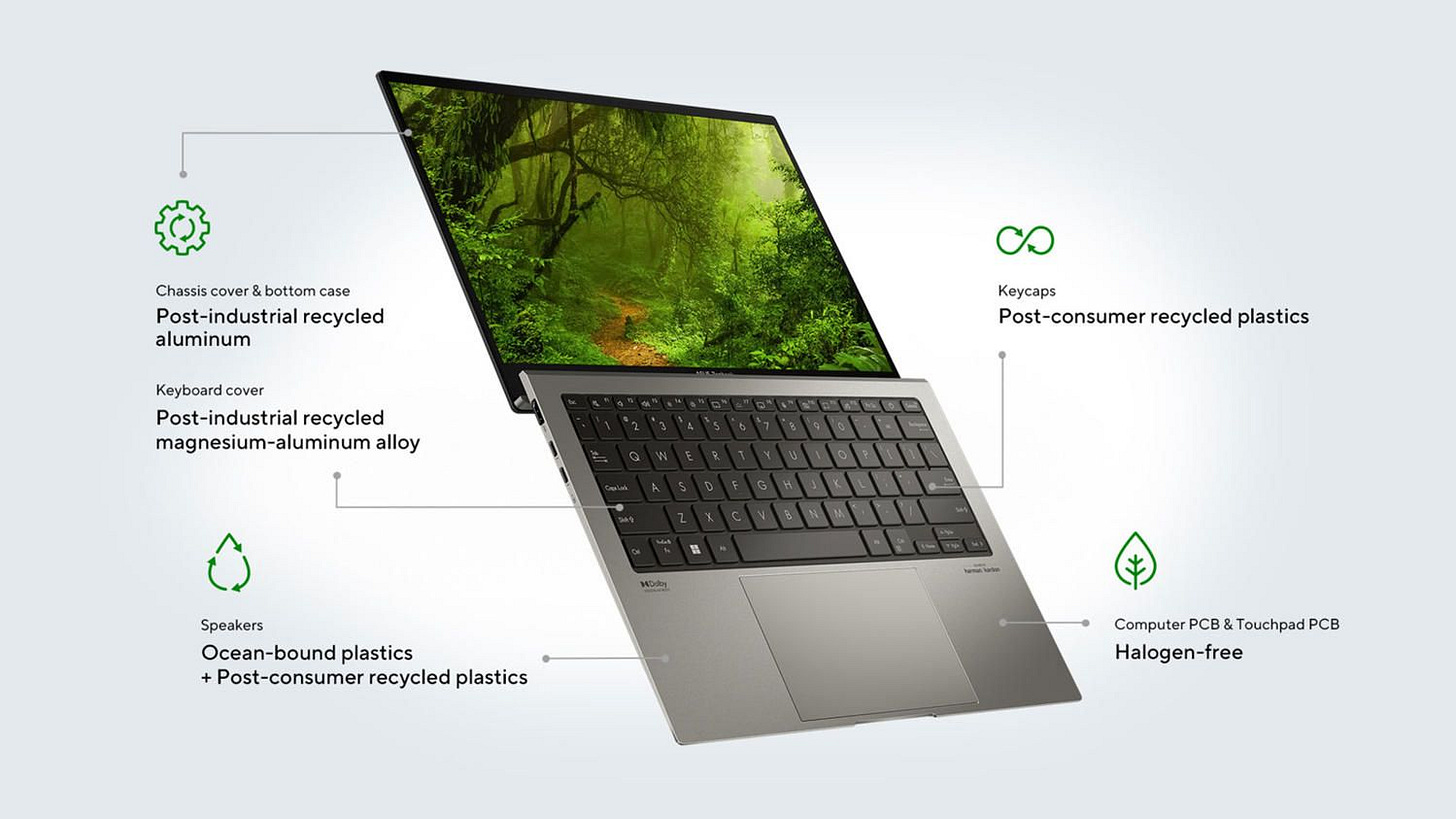Asus went from 35% to 65% in Material Circularity
Here's how they did it, in 5 steps.
Asus went from 35% to 65% in material circularity.
👇 Here's how they did it, in 5 steps:
1️⃣ 1. ASUS used the Circular Transition Indicators (CTI) v4.0, a framework to assess the circularity of its products.
𝗧𝗵𝗲 𝗴𝗼𝗮𝗹 𝗶𝘀 𝘁𝗼 𝗱𝗲𝘀𝗶𝗴𝗻 𝗽𝗿𝗼𝗱𝘂𝗰𝘁𝘀 𝘁𝗵𝗮𝘁 𝗮𝗿𝗲 𝗺𝗼𝗿𝗲 𝘀𝘂𝘀𝘁𝗮𝗶𝗻𝗮𝗯𝗹𝗲 𝗮𝗻𝗱 𝗰𝗶𝗿𝗰𝘂𝗹𝗮𝗿.
2️⃣ ASUS applied CTI to analyze the circular performance of its Zenbook S13 OLED laptop.
They assessed material circularity, water circularity, and renewable energy use in the laptop's production. 🤖
3️⃣ ASUS integrated the results from the CTI assessment into its design thinking process to create a more circular laptop design.
This integration helped them significantly increase the material circularity of the Zenbook S13 OLED.
4️⃣ ASUS faced challenges in finding circular alternatives for certain parts of the laptop while balancing consumer requirements, commercial viability, and technical feasibility. 🙈
They had to source new materials and optimize packaging to achieve their circular goals.
5️⃣ By implementing these circular interventions, ASUS nearly doubled the material circularity percentage of the Zenbook S13 OLED from 35% to 65%.
They also improved circular inflow (the percentage of secondary and renewable resources) and circular outflow (the percentage of materials recovered after end-of-life) through modular design and disassembly,
leading to a successful laptop redesign and a "make-use-return" business model. 😎
What do you think about this initiative?
_____
P. S: We love working with brands who are looking to go circular cercular.
If you are one, reach out to us at sales@cerclex.com and we can talk.



